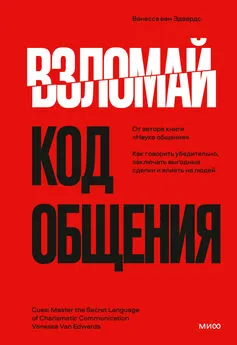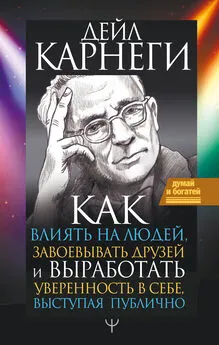Ник Коленда - Система убеждения [Как влиять на людей с помощью психологии]
- Название:Система убеждения [Как влиять на людей с помощью психологии]
- Автор:
- Жанр:
- Издательство:Альпина Паблишер
- Год:2018
- Город:Москва
- ISBN:978-5-9614-5086-6
- Рейтинг:
- Избранное:Добавить в избранное
-
Отзывы:
-
Ваша оценка:
Ник Коленда - Система убеждения [Как влиять на людей с помощью психологии] краткое содержание
Система убеждения [Как влиять на людей с помощью психологии] - читать онлайн бесплатно ознакомительный отрывок
Интервал:
Закладка:
Schwarz, N. & Clore, G. L. (1983). Mood, misattribution, and judgments of well-being: Informative and directive functions of affective states. Journal of Personality and Social Psychology, 45 (3), 513.
Seiter, J. S. & Dutson, E. (2007). The effect of compliments on tipping behavior in hairstyling salons. Journal of Applied Social Psychology, 37 (9), 1999–2007.
Sherif, M. (1936). The Psychology of Social Norms. New York: Harper.
Shih, M., Pittinsky, T. L. & Ambady, N. (1999). Stereotype susceptibility: Identity salience and shifts in quantitative performance. Psychological Science, 10 (1), 80–83.
Shiv, B., Carmon, Z. & Ariely, D. (2005). Placebo effects of marketing actions: Consumers may get what they pay for. Journal of Marketing Research, 383–393.
Shultz, T. R. & Lepper, M. R. (1996). Cognitive dissonance reduction as constraint satisfaction. Psychological Review, 103(2), 219.
Sigall, H. & Ostrove, N. (1975). Beautiful but dangerous: Effects of offender attractiveness and nature of the crime on juridic judgment. Journal of Personality and Social Psychology, 31 (3), 410–414.
Simons, D. J. & Levin, D. T. (1998). Failure to detect changes to people during a real-world interaction. Psychonomic Bulletin & Review, 5 (4), 644–649.
Skinner, B. F. (1948). Superstition in the pigeon. Journal of Experimental Psychology, 38 (2), 168–172.
Snyder, M., Tanke, E. D. & Berscheid, E. (1977). Social perception and interpersonal behavior: On the self-fulfilling nature of social stereotypes.
Stepper, S. & Strack, F. (1993). Proprioceptive determinants of emotional and nonemotional feelings. Journal of Personality and Social Psychology, 64, 211–211.
Strack, F., Martin, L. L. & Stepper, S. (1988). Inhibiting and facilitating conditions of the human smile: A nonobtrusive test of the facial feedback hypothesis. Journal of Personality and Social Psychology, 54 (5), 768–777.
Strack, F. & Mussweiler, T. (1997). Explaining the enigmatic anchoring effect: Mechanisms of selective accessibility. Journal of Personality and Social Psychology, 73, 437–446.
Strack, F. & Neumann, R. (2000). Furrowing the brow may undermine perceived fame: The role of facial feedback in judgments of celebrity. Personality and Social Psychology Bulletin, 26 (7), 762–768.
Strick, M., van Baaren, R. B., Holland, R. W. & van Knippenberg, A. (2011). Humor in advertisements enhances product liking by mere association. Psychology of Popular Media Culture, 1, 16–31.
Thompson, D. V. & Chandon Ince, E. (2013). When disfluency signals competence: The effect of processing difficulty on perceptions of service agents. Journal of Marketing Research, 50 (2), 228–240.
Townsend, C. & Shu, S. B. (2010). When and how aesthetics influences financial decisions. Journal of Consumer Psychology, 20 (4), 452–458.
Tversky, A. & Kahneman, D. (1973). Availability: A heuristic for judging frequency and probability. Cognitive Psychology, 5 (2), 207–232.
Tversky, A. & Kahneman, D. (1974). Judgment under uncertainty: Heuristics and biases. Science, 185 (4157), 1124–1131.
Tversky, A. & Kahneman, D. (1981). The framing of decisions and the psychology of choice. Science, 211(4481), 453–458.
Tversky, A. & Kahneman, D. (1991). Loss aversion in riskless choice: A reference-dependent model. The Quarterly Journal of Economics, 106 (4), 1039–1061.
Valins, S. (1967). Emotionality and information concerning internal reactions. Journal of Personality and Social Psychology, 6 (4), 458.
Van Baaren, R. B., Holland, R. W., Steenaert, B. & van Knippenberg, A. (2003). Mimicry for money: Behavioral consequences of imitation. Journal of Experimental Social Psychology, 39(4), 393–398.
Van Bavel, J. J., Packer, D. J. & Cunningham, W. A. (2008). The neural substrates of in-group bias: A functional magnetic resonance imaging investigation. Psychological Science, 19 (11), 1131–1139.
Wansink, B., Kent, R. J. & Hoch, S. J. (1998). An anchoring and adjustment model of purchase quantity decisions. Journal of Marketing Research, 35 (1), 71–81.
Wells, G. L. & Petty, R. E. (1980). The effects of overt head movements on persuasion: Compatibility and incompatibility of responses. Basic and Applied Social Psychology, 1 (3), 219–230.
White, G. L., Fishbein, S. & Rutsein, J. (1981). Passionate love and the misattribution of arousal. Journal of Personality and Social Psychology, 41(1), 56.
Whittlesea, B. W. (1993). Illusions of familiarity. Journal of Experimental Psychology: Learning, Memory, and Cognition, 19 (6), 1235.
Williams, K. B., Radefeld, P. S., Binning, J. F. & Sudak, J. (1993). When job candidates are "hard-" versus "easy-to-get": Effects of candidate availability on employment decisions. Journal of Applied Social Psychology, 23 (3), 169–198.
Wilson, T. D., Houston, C. E., Etling, K. M. & Brekke, N. (1996). A new look at anchoring effects: Basic anchoring and its antecedents. Journal of Experimental Psychology-General, 125 (4), 387–402.
Worchel, S., Lee, J. & Adewole, A. (1975). Effects of supply and demand on ratings of object value. Journal of Personality and Social Psychology, 32(5), 906.
Zajonc, R. B. (1968). Attitudinal effects of mere exposure. Journal of Personality and Social Psychology, 9, 1–27.
Zajonc, R. B. (2001). Mere exposure: A gateway to the subliminal. Current Directions in Psychological Science, 10 (6), 224–228.
Zajonc, R. B., Murphy, S. T. & Inglehart, M. (1989). Feeling and facial efference: Implications of the vascular theory of emotion. Psychological Review, 96 (3), 395–416.
Zaltman, G. & Zaltman, L. H. (2008). Marketing Metaphoria: What Deep Metaphors Reveal About the Minds of Consumers. Boston: Harvard Business Press.
Ариели Д. Предсказуемая иррациональность. Скрытые силы, определяющие наши решения. — М.: Манн, Иванов и Фербер, 2010.
Бергер Й. Заразительный. Психология сарафанного радио. Как продукты и идеи становятся популярными. — М.: Манн, Иванов и Фербер, 2017.
Скиннер Б.Ф. Поведение организмов. — М.: Оперант, 2016.
Чалдини Р. Психология влияния. Как научиться убеждать и добиваться успеха. — М.: Эксмо, 2016.
Шварц Б. Парадокс выбора. Почему «больше» значит «меньше». — М.: Добрая книга, 2005.
Примечания
1
В ходе расследования сложилась несколько иная версия произошедшего (в частности, судя по материалам следствия, свидетелей было меньше). Однако именно это описание, основанное на репортаже из The New York Times, вошло в многочисленные американские учебники по социальной психологии, став яркой иллюстрацией эффекта свидетеля. — Прим. ред.
2
В этом году вышло англоязычное издание книги И.П. Павлова об условных рефлексах: Pavlov, I. P. (1927). Conditioned reflexes: an investigation of the physiological activity of the cerebral cortex. Oxford, England: Oxford University Press. — Прим. ред.
Интервал:
Закладка:
![Обложка книги Ник Коленда - Система убеждения [Как влиять на людей с помощью психологии]](/books/1098396/nik-kolenda-sistema-ubezhdeniya-kak-vliyat-na-lyudej.webp)




![Ангелина Шам - Ангел влияния [Технологии коммуникативного гипноза для убеждения и мотивации людей] [litres]](/books/1076839/angelina-sham-angel-vliyaniya-tehnologii-kommunikati.webp)




